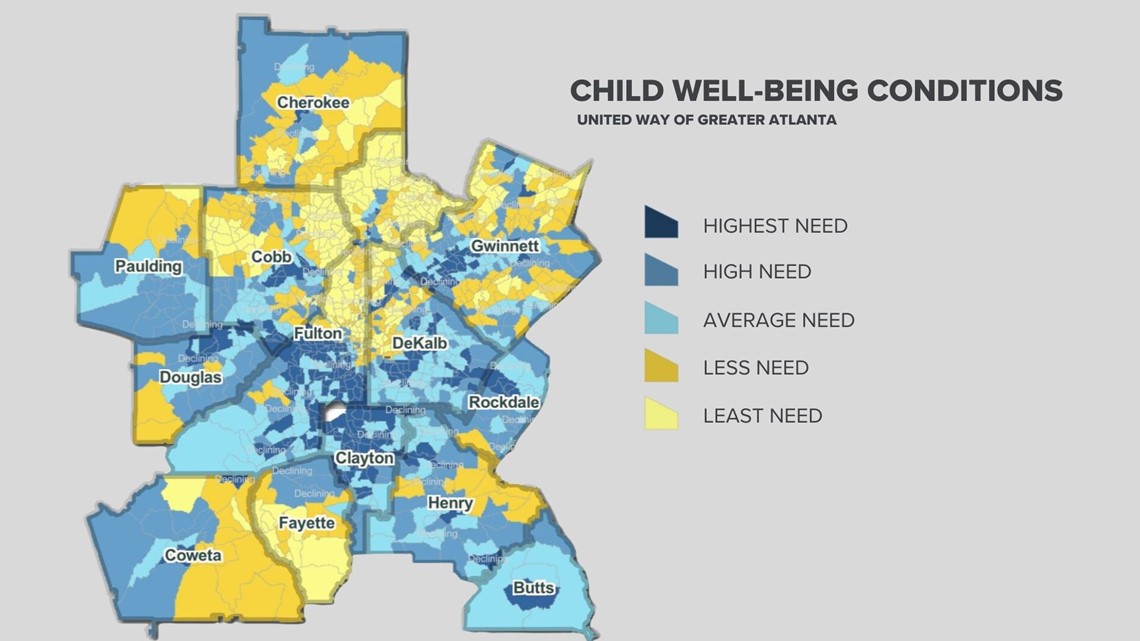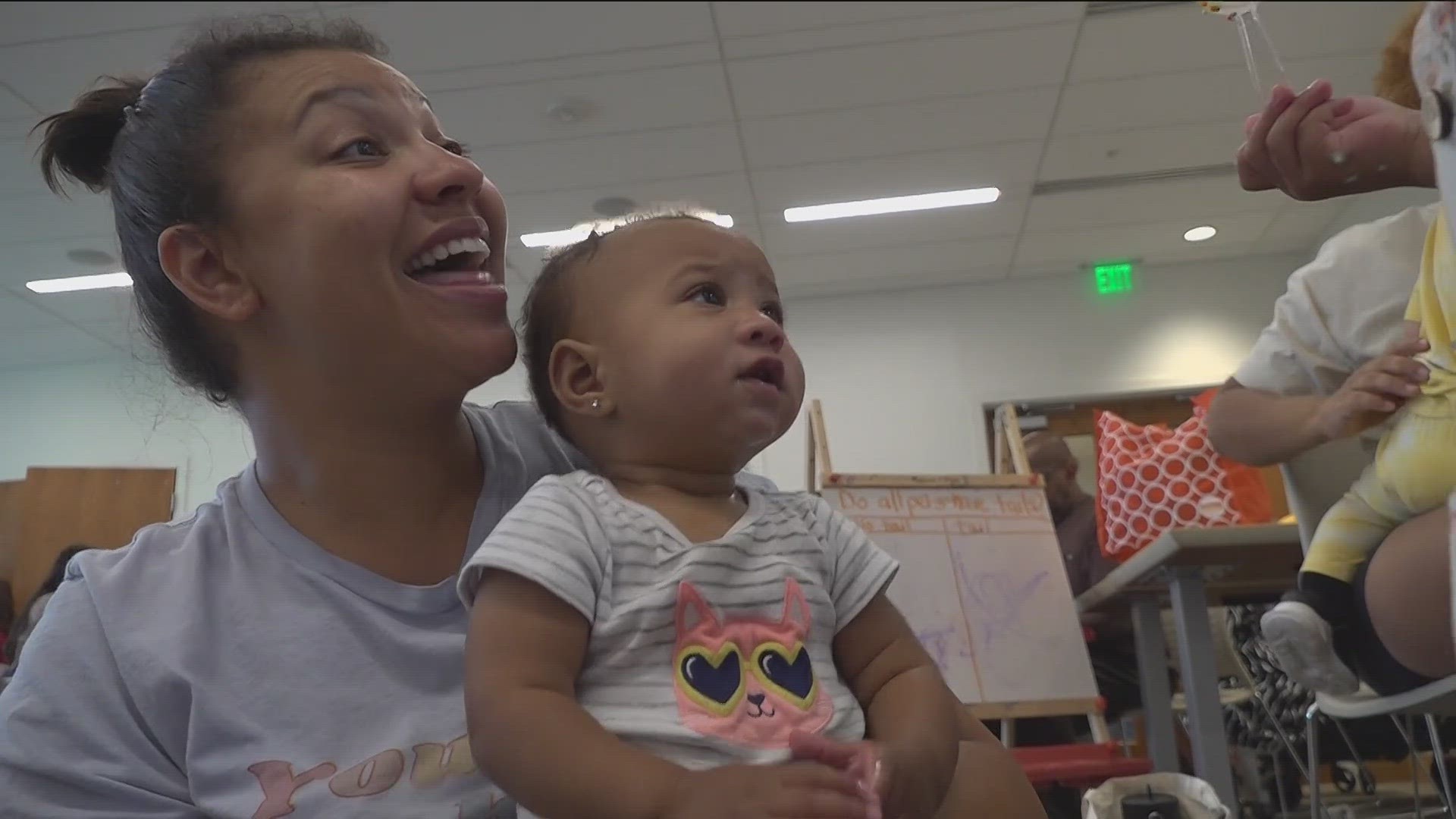ATLANTA — United Way of Greater Atlanta is releasing a comprehensive index shedding light on child well-being across the 13-county metro Atlanta area, showing who is most impacted.
Their data encompassed 1,265 Census Tracts or communities; analyzing five years of data provides critical insights into children's environments from birth to adulthood.
“Many of these places are disproportionally communities of color and areas where access to training, technology, food, and healthcare are severely lagging," Milton J. Little, Jr., United Way of Greater Atlanta’s President and CEO, said. "Every child deserves to have a quality education, live in a safe neighborhood, and have the opportunity to fulfill their promise.”
A full report from the international nonprofit is expected soon; here are some of their initial insights.
The Ticking Clock
United Way's data indicates that temporary pandemic-era funding and resources provided by public and private organizations were crucial in stabilizing overall child well-being. Rental assistance, eviction moratoriums, food assistance and stimulus payments have been instrumental in this effort.
“While the region’s average was maintained, our data shows a significant number of neighborhoods in crisis, where COVID-era resources and support systems are increasingly disappearing, jeopardizing children’s ability to thrive,” Little said.


By the Numbers
Shockingly, out of metro Atlanta's 1.2 million children and youth, the organization said more than 500,000 live in areas of high need where child well-being measures are significantly lower than the regional average.
“By knowing exactly where kids face the greatest challenges in Greater Atlanta, we have the capability to be laser-focused in where we build strong partnerships to direct resources, investments, and channel community resources," said Little.
Most alarmingly, the index identifies over 77,000 children residing in 79 communities where a declining state of child well-being compounds the high level of need. This means that the circumstances and environment for these children have worsened over the past five years. United Way believes that addressing the needs of families living in these high-priority neighborhoods and ensuring access to necessary resources is crucial for the region's overall success.
Georgia lags behind all but seven states at the national level, ranking 37th in child well-being according to the Annie E. Casey Foundation's 2023 report.
Other Key Findings
- Post-secondary enrollment rates have dropped by an average of 13% across the region in the past five years. In areas of high need and declining child well-being, post-secondary enrollment is 7% below the metro-wide average in areas of high need and declining child well-being.
- Approximately 14,000 youth between the ages of 16 and 19 are currently not engaged in either work or educational pathways. Known as "opportunity youth," these adolescents are neither in school nor employed. Although spread throughout the region, 16% live in areas facing high need and declining child well-being, despite comprising only 7% of the 16 to 19-year-olds in the region.

